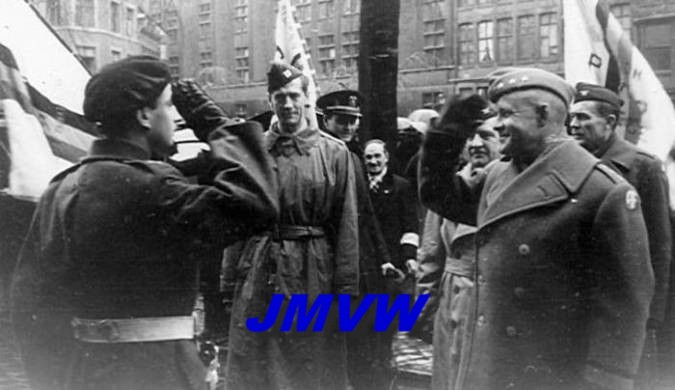 |
| Captain
THIRY of the Corps of Interpreters, left, saluting
General LEE, Colonel MC CORD, CHANOR Base Section Area Commander Liège-Namur, and Colonel WIGGINS, CHANOR Base Section Staff. Place and date unknown. |
THE CORPS OF INTERPRETERS
1944 - 1946
SHORT HISTORY
Created by decree of the Prince-Regent on November 28 1944 at Tervuren, Belgium.
After a short training period the interpreters were assigned to the 21st Army Corps and the 12th US Army Corps.
The first interpreters assumed active duty in January 1945.
The Corps contained 400 interpreters from which 50 were assimilated as officer, the rest as NCO.
 |
| Captain
THIRY of the Corps of Interpreters, left, saluting
General LEE, Colonel MC CORD, CHANOR Base Section Area Commander Liège-Namur, and Colonel WIGGINS, CHANOR Base Section Staff. Place and date unknown. |
Some of the interpreters even took part in the fight against Nazi Germany.
Interpreter LEWI was killed in action during the campaign in the Netherlands in 1945.
Interpreter SOMOGI was badly wounded during the battle for Calcar, Germany.
On May 8 1946 the Corps of Interpreters was disbanded.
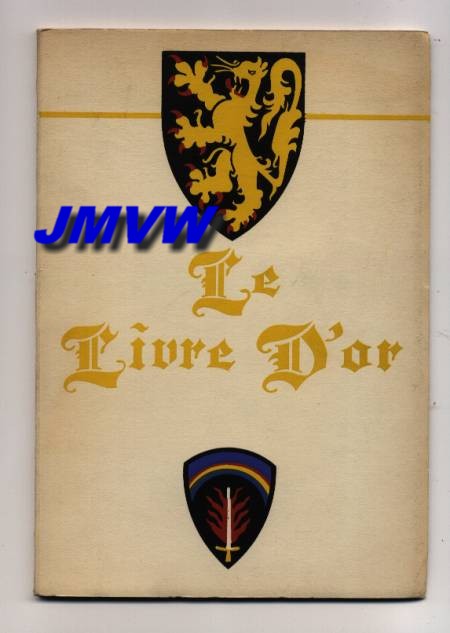 |
| "GoldenBook"
of the Corps of Interpreters and the Belgian Military Mission edited in 1946. |
Commanding
Officer :
Lieutenant-Colonel DE SELLIERS DE MORANVILLE Albert.
FORMATION BADGE
The Formation Badge was created by the Commanding Officer de Selliers de Moranville.
A yellow flame on a black shield with red border.
The flame was
the symbol of the descent of the Holy Ghost on the apostles
what resulted in the gift of speech for all of them.
This is the reason why the flame was choosen as the symbol of the interpreters.
The Formation Badge was worn on the left arm.
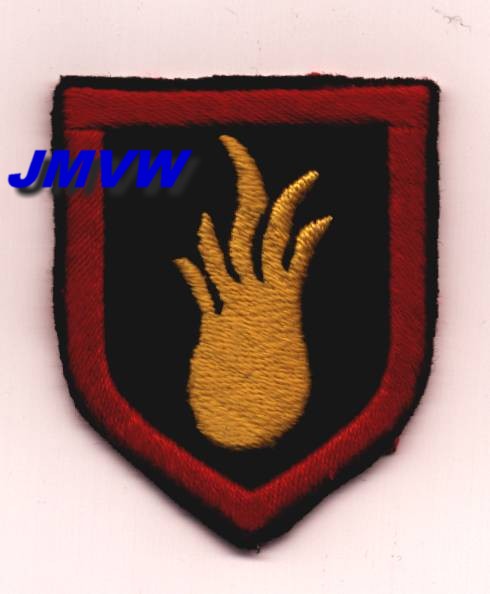 |
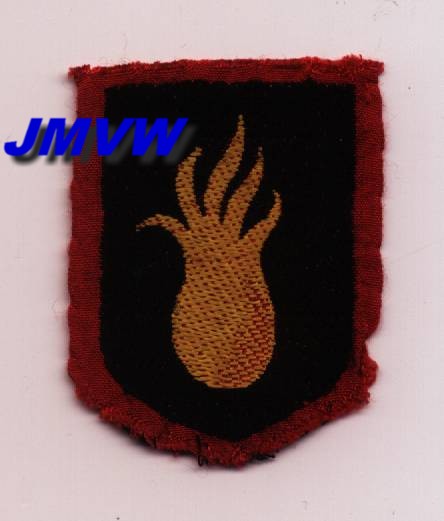 |
|
| Embroidered version | Woven version | |
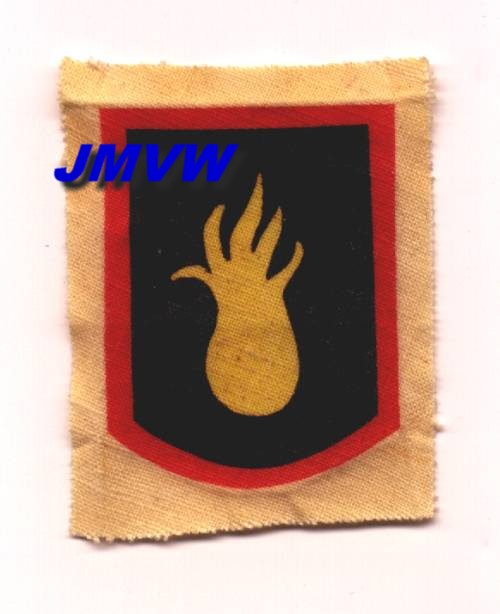 |
||
| Printed version | ||
RANK INSIGNIA AND OTHER ARM BADGES.
British Rank Insignia as well as the Belgian Rank Insignia were worn by the men of the Corps of Interpreters.
On the left arm they wore a "BELGIUM" title, red letters as well as white letters.
On the right arm, the Belgian National Colours were worn.